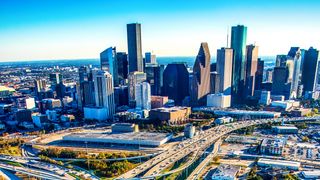It’s WiFi Way or the Highway for 5.9 GHz

It was rush hour inside the Beltway over the past several weeks, as efforts by cable broadband operators to get more unlicensed spectrum for WiFi ran into a concerted effort by automakers and highway agencies to block an FCC compromise, suggesting it put thousands of lives at risk.
The entire 5.9 GHz spectrum band (75 MHz) had been licensed for public safety, but in 2004 was opened up for commercial use by automakers, initially for dedicated shortrange communications (DSRC) between vehicles (V2V). But that technology has been slow to roll out and passed in the fast lane by newer technologies, like C-V2X (Cellular Vehicle-to-Everything).
As cable operators rolled out hundreds of thousands of unlicensed WiFi hotspots as their primary mobile broadband play, they have eyed that midband sweet-spot spectrum hungrily. The FCC, too, seeks as much of the sweet-spot midband spectrum for 5G as possible.
Automakers and transportation authorities have been balking at giving any of that spectrum up, and particularly at having to share the same spectrum, arguing that they could face life-threatening interference if others were allowed to use it — a risk they don’t think the FCC should take.
In some bands, notably the broadcast band, the FCC is allowing for dynamic sharing of the same spectrum with technologies that can sense when the bandwidth is being used by licensees and steer clear. But incumbent licensees are not convinced, or at least argue that if the FCC is wrong and there is interference, lives are at risk.
The FCC was initially considering a similar sharing regime for 5.9 and did some testing that chairman Ajit Pai said had been promising. But given the pushback and the complexity of the sharing regime, which could have taken several years to perfect, Pai took a different route.
The FCC voted unanimously last Dec. 12 to propose sharing the band by dividing it up. The proposal is to free up the lower 45 MHz exclusively for unlicensed and keep the upper 30 MHz for V2V communications, including 20 MHz of that for C-V2X and perhaps the rest depending on whether DSRC pans out.
Broadcasting & Cable Newsletter
The smarter way to stay on top of broadcasting and cable industry. Sign up below
Comments on the proposal were due last week and it was clearly a divided highway.
Public Knowledge, which pointed out that that the 5.9 spectrum is a public safety band, is on cable broadband’s side, at least when it comes to transportation’s arguments for needing all of the band.
“The insistence by automakers that they need the entire existing allocation for public safety is belied by their equally fervent insistence that they should be permitted complete freedom to use free licenses issued for public safety for commercial purposes, and should have complete freedom to sell to third parties or otherwise use the personal information collected in the name of public safety,” Public Knowledge told the FCC.
But transportation officials are pushing back hard, invoking the specter of lives lost and repeating the sobering statistic of “more than 37,000 fatalities that occur on our nation’s roads each year,” as the American Public Transportation Association put it.
Everyone from the Hawaii Bicycling League to the Tampa Hillsborough County Expressway Authority has been weighing in at the FCC in recent days to try and get it to abandon the plan, a final order for which must still be voted.
The National Safety Council calls it a grave mistake to take back any of the spectrum from V2V, and notes that it is joined by “the U.S. Department of Transportation (USDOT), every state Department of Transportation, and other road and public safety advocates in opposing the FCC’s proposal.”
The Institute of Transportation Engineers (ITE) told the FCC that connected car tech could save tens of thousands of lives, “but only if these technologies are given the certainty of a safety spectrum that is free from signal interference.”
Pai has said he is convinced spectrum can be shared without threatening V2V, and he has some bipartisan backing, ranging from the commission’s Democrats and Republicans, who were on the same page, to legislators as politically divergent as Reps. Billy Long (R-Mo.) and Yvette Clarke (D-N.Y.), vice chair of the House Energy & Commerce Committee.
In fact, Pai argues that the proceeding is an opportunity to realize “significant safety benefits” by “carefully but expeditiously” developing C-V2X for crash avoidance.
NCTA–The Internet & Television Association says that allowing for sharing will enable the kind of gigabit WiFi speeds the industry must deploy to keep up with consumer demand.
New America’s Open Technology Institute could have been speaking for basically all the Big Tech and broadband companies when it told the FCC last week: “The virtually unused 5.9-GHz band has become a roadblock to an immensely valuable WiFi superhighway comprised of contiguous wide channels capable of delivering gigabit-fast and affordable wireless connectivity to all of America’s homes, workplaces, enterprises, schools and public spaces.”
Contributing editor John Eggerton has been an editor and/or writer on media regulation, legislation and policy for over four decades, including covering the FCC, FTC, Congress, the major media trade associations, and the federal courts. In addition to Multichannel News and Broadcasting + Cable, his work has appeared in Radio World, TV Technology, TV Fax, This Week in Consumer Electronics, Variety and the Encyclopedia Britannica.

